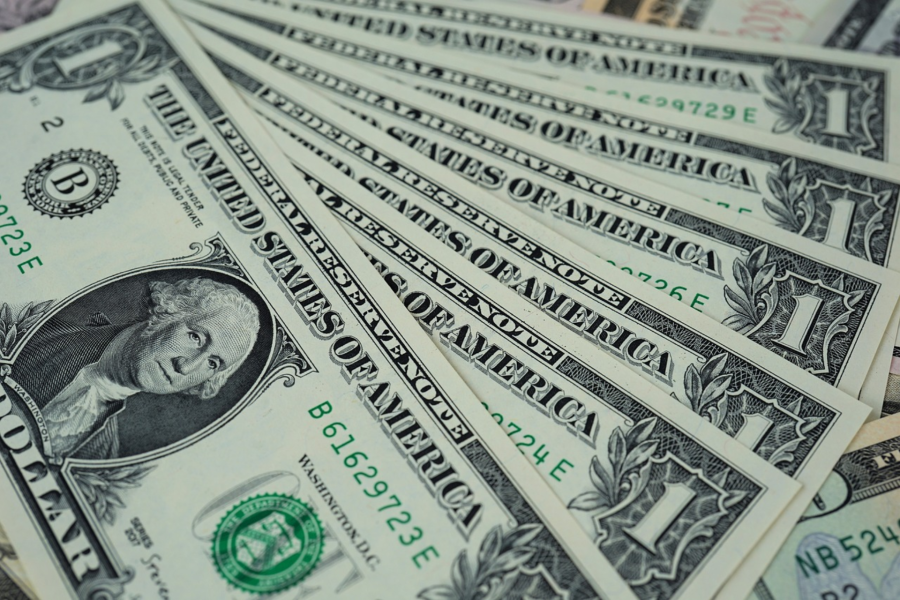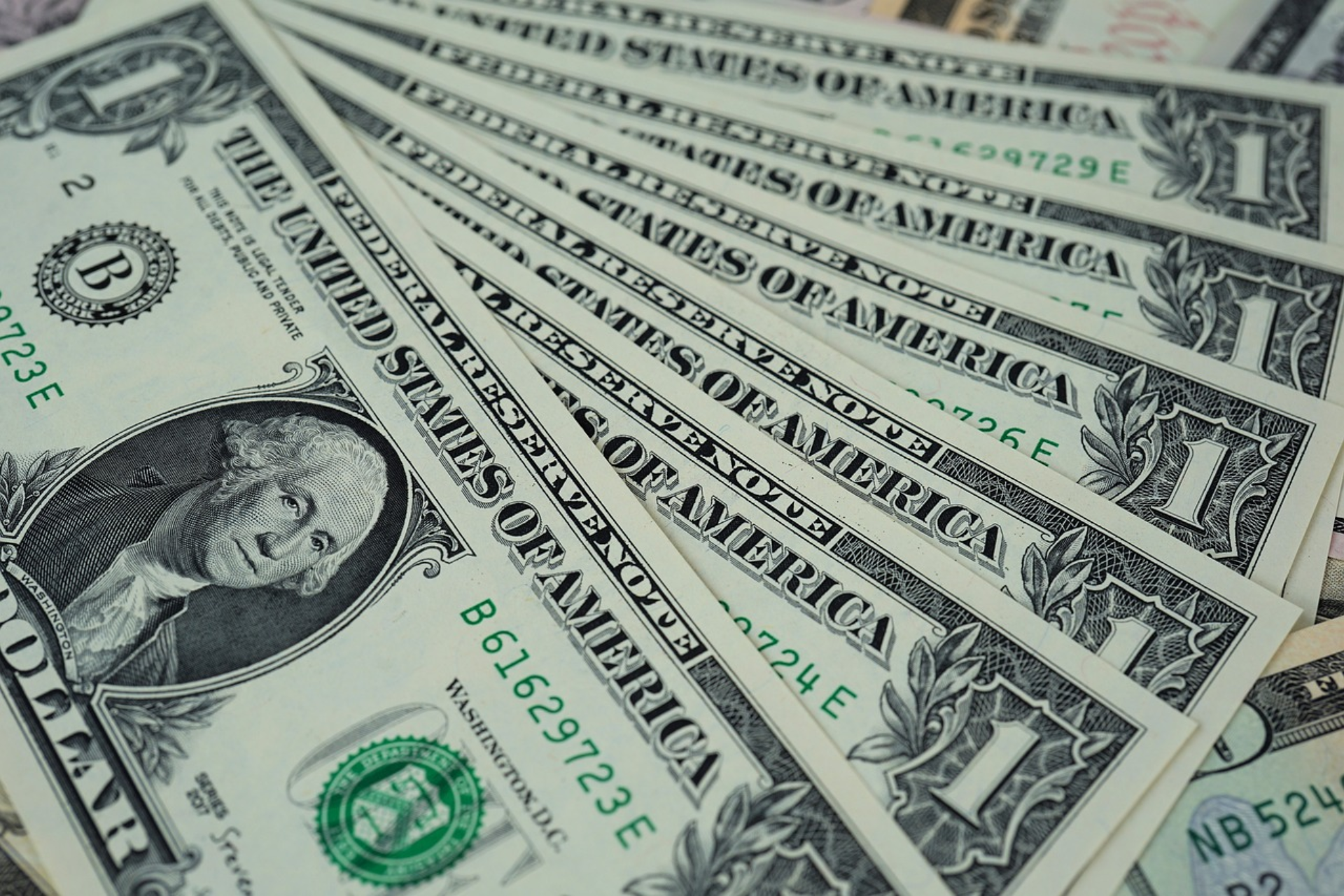
Dollar started steady on Monday with US inflation Fed meeting looming
The Dollar started steady on Monday, with a reading on U.S. inflation and the Federal Reserve’s last policy meeting for the year likely to set the tone for the week.

Reuters: The Dollar started steady on Monday, with a reading on U.S. inflation and the Federal Reserve’s last policy meeting for the year likely to set the tone for the week, while rising deflationary pressure in China leant on the yuan.
U.S. DOLLAR STARTED STEADY ON MONDAY
The greenback pushed back above 145 yen and last bought 145.12 yen, reversing some of its steep fall against the Japanese currency late last week, as bets grew that the Bank of Japan’s ultra-low interest rates policy may be nearing an end. Sterling dipped 0.02% to $1.2545 and was huddled near Friday’s two-week low of $1.2504.
Data on Friday showed U.S. job growth accelerated in November while the unemployment rate fell to 3.7%, underscoring the resilience of the labour market in the world’s largest economy and challenging expectations of imminent rate cuts from the Fed beginning early next year. “They were a good set of numbers,” said Joseph Capurso, head of international and sustainable economics at Commonwealth Bank of Australia. “Wages were still running probably too hot for the Fed to be comfortable and the unemployment rate fell – that was a really big surprise.”
ALSO READ: Who are the richest South Africans in the world today? – 11 December 2023
The figures caused traders to push back expectations of how soon the Fed could begin cutting rates, with many now leaning toward May instead of March. The euro rose 0.06% to $1.0767 but stood not too far from Friday’s more than three-week low of $1.07235, while the dollar index steadied at 103.95. The index gained more than 0.7% last week, reversing three weeks of loss. Focus now turns to the Federal Open Market Committee policy meeting later this week and U.S. inflation data due ahead of that, where expectations are for consumer prices to continue easing on an annual basis.
“The big influence on the U.S. dollar this week is going to be the FOMC meeting, in particular Chair Jerome Powell’s comments at his press conference,” said CBA’s Capurso. “If he’s hawkish, I think markets will probably ignore him and the U.S. dollar remains steady. But if he’s dovish, then I think the U.S. dollar and bond yields will fall, so it’s an asymmetric reaction.” In Asia, data over the weekend showed China’s consumer prices fell at the fastest pace in three years in November while factory-gate deflation deepened, indicating increasing deflationary pressure as weak domestic demand casts doubt over the country’s economic recovery.
The offshore yuan languished near a three-week low and last stood at 7.1842 per dollar, though movement was largely subdued in early Asia trade. “It is important to note that the main drag to China’s headline inflation remains food prices. Nonetheless, the lack of a strong revival in the economy suggests that weak inflation will persist, and more policy support is indeed required,” said Alvin Tan, head of Asia FX strategy at RBC Capital Markets. The latest numbers add to recent mixed trade data and manufacturing surveys that have kept alive calls for further policy support to shore up growth. The Australian dollar, often used as a liquid proxy for the yuan, was little changed at $0.6577, while the New Zealand dollar was last 0.11% higher at $0.6128.
ALSO READ: SA’s most expensive home SOLD for R700 MILLION
BRITISH POUND
Reuters: The pound closed in on its largest weekly fall against the yen in a year on Friday, driven by a strong cash flow into the Japanese currency after authorities in Tokyo hinted at a long-awaited change in monetary policy. Sterling is also heading for its worst weekly performance against the dollar in a month, but was firm against the euro. Trading this week has been dominated by rate expectations, with those concerning the outlook for interest in Japan providing the strongest catalyst. The yen has risen across the board, particularly against higher-yielding currencies such as the pound and the New Zealand dollar.
The next risk event for markets will be the monthly U.S. employment report later on Friday, which is expected to show 180,000 workers were added to non-farm payrolls in November. Sterling was last down 0.3% on the day at $1.2564. Against the yen, sterling was up 0.3% at 181.15, after a fall of nearly 3% on Thursday. The pound is set for a weekly decline of 2.8% against the yen, its largest fall in a year. The Bank of England is among the major central banks that meet next week to discuss monetary policy.
ALSO READ: Who is the richest person in the world today? Top 10 list – 11 December 2023
Traders do not expect the Bank to make any changes to interest rates, leaving the focus on what policymakers think about the outlook for growth and inflation and what that might suggest about the timing of the first cut. Futures markets are priced to show the first cut could materialise in June, compared with March for the European Central Bank and May for the Federal Reserve. Based on money markets, the BoE is expected to deliver around 80 basis points in rate cuts in 2024, compared with 140 from the ECB and 122 from the Fed.
The UK economy has narrowly avoided recession and inflation is receding. But analysts say evidence is emerging that the BoE’s series of rate rises has hit consumers and businesses. Any revision lower to the path for UK rates could result in more sustained sterling weakness, Gareth Gettinby, an investment manager with Aegon Asset Management, said. “Whilst a lot of the weak structural backdrop is known, the key negative for sterling over 2024 is the potential for the markets to price in earlier rate cuts. Sterling will now return to trading by conventional metrics such as global risk and rates,” he said in Aegon’s 2024 outlook.
With the prospect of UK interest rates remaining higher for longer, the pound is the G10 second-strongest performing currency against the dollar this year, with a gain of 3.9%, after the Swiss franc , which has risen nearly 5%. It is also 3% higher against the dollar this quarter, but much of this strength is a function of dollar weakness, rather than demand for the pound. Against European currencies, sterling is essentially flat against the euro so far in the fourth quarter and up just over 1% against the Swiss franc and the Swedish crown. Against the Norwegian crown, the pound has gained around 4%, mostly because of falling oil prices , which undermine Norway’s economy.
ALSO READ: Late applications for grade 1 and 8 in Gauteng opening next week
SOUTH AFRICAN RAND
Reuters: South Africa’s rand weakened against the dollar on Friday after a surge in U.S. payrolls gains dampened hopes of an early interest rate cut by the Federal Reserve. At 1439 GMT, the rand traded at 18.9250 against the dollar, about 0.9% weaker than its previous close. The dollar index was last trading up 0.4% at 104.1 against a basket of major currencies. Data on Friday showed U.S. job growth accelerated in November while the unemployment rate fell to 3.7%, signs of underlying labour market strength that suggested financial market expectations of a rate cut early next year were probably premature.
Like most emerging market currencies, the rand tends to take cues from global factors such as U.S. monetary policy in addition to local events. Investors in South Africa are still on the lookout for an announcement on the appointment of a new chief executive officer at struggling utility Eskom after Bloomberg reported that Dan Marokane was set to be appointed CEO. On the stock market, the Top-40 index was down over 1.5%.
ALSO READ: Newspaper front pages from around the world, 11 December 2023
GLOBAL MARKETS
Reuters: Asian shares drifted lower on Monday ahead of a week packed with a quintet of central bank meetings and data on U.S. inflation that could make or break market hopes for an early and rapid fire round of rate cuts next year. An upbeat payrolls report has already seen investors scale back expectations for a March cut by the Federal Reserve, though May remains priced at a 76% chance. The Fed is considered certain to hold rates at 5.25-5.50% this week, putting the focus on the so-called dot plots for rates and Chair Jerome Powell’s press conference.
The consumer price report for November on Tuesday will also influence the outlook with analysts forecasting an unchanged headline rate and a 0.3% rise in the core. “We look for another Fed-friendly CPI report but, barring surprises, anticipate the policy statement to signal that economic conditions have not changed enough for officials to drop their tightening bias just yet,” said John Briggs, global head of strategy at NatWest Markets. “We think Powell will leave the option of a possible hike on the table, but the hurdle seems quite high for the Fed to follow through,” he added. “We also expect the ECB to cut early while the BoE will continue to push-back against market pricing of cuts in the first half of 2024.”
The European Central Bank, Bank of England, Norges Bank and the Swiss National Bank all meet on Thursday, with Norway the only one considered a possible hiker. There is also a risk the SNB may toy with renewed intervention to weaken the franc. With so much riding on the outcomes, investors were understandably cautious and MSCI’s broadest index of Asia-Pacific shares outside Japan eased 0.7%. Japan’s Nikkei bounced 1.6% after shedding 3.4% last week amid speculation of an end to super-easy monetary policy. Chinese blue chips slipped 0.6% after data showed consumer prices fell 0.5% in November, the sharpest drop since late 2020.
ALSO READ: Gauteng admits 99.8% of learners for 2024 academic year
EUROSTOXX 50 futures and FTSE futures were little changed. S&P 500 futures were flat, while Nasdaq futures edged down 0.2%. The Treasury market faces a test of its own in the shape of $108 billion in new supply of three-year, 10-year and 30-year paper. Yields on 10-year notes were steady at 4.24% having risen on Friday in the wake of the jobs report, though they still ended flat on the week. In currency markets all eyes were on the yen after some wild swings as speculation swirled the Bank of Japan could signal another step away from its super easy policy at a meeting next week. The dollar did manage to nudge up on Monday to reach 145.40 yen, having lost 1.3% last week and briefly touching a low of 141.60.
The dollar fared better on the euro at $1.0770, which was pressured by market pricing for early ECB rate cuts. “With inflation falling quickly in the Eurozone, we do not expect the ECB post-meeting communication to provide too much push back against current market pricing for a rate cutting cycle beginning in April,” said analysts at CBA in a note. “We expect the first rate cut will come a little later in June.” In commodity markets, gold took a knock after the jobs report and was last at $1,003 an ounce.
Oil prices idled after sliding 3.9% last week to five-month lows amid doubts that all OPEC+ members would stick with supply cuts. Prices did get some support on Friday when Washington announced it would rebuild its strategic oil reserves. The market will also be watching the outcome of the COP28 climate summit, which is working on a first-of-its-kind deal to phase out the world’s use of fossil fuels. Brent was up 9 cents at $75.93 a barrel, while U.S. crude added 7 cents to $71.30.
Published by the Mercury Team on 11 December 2023
